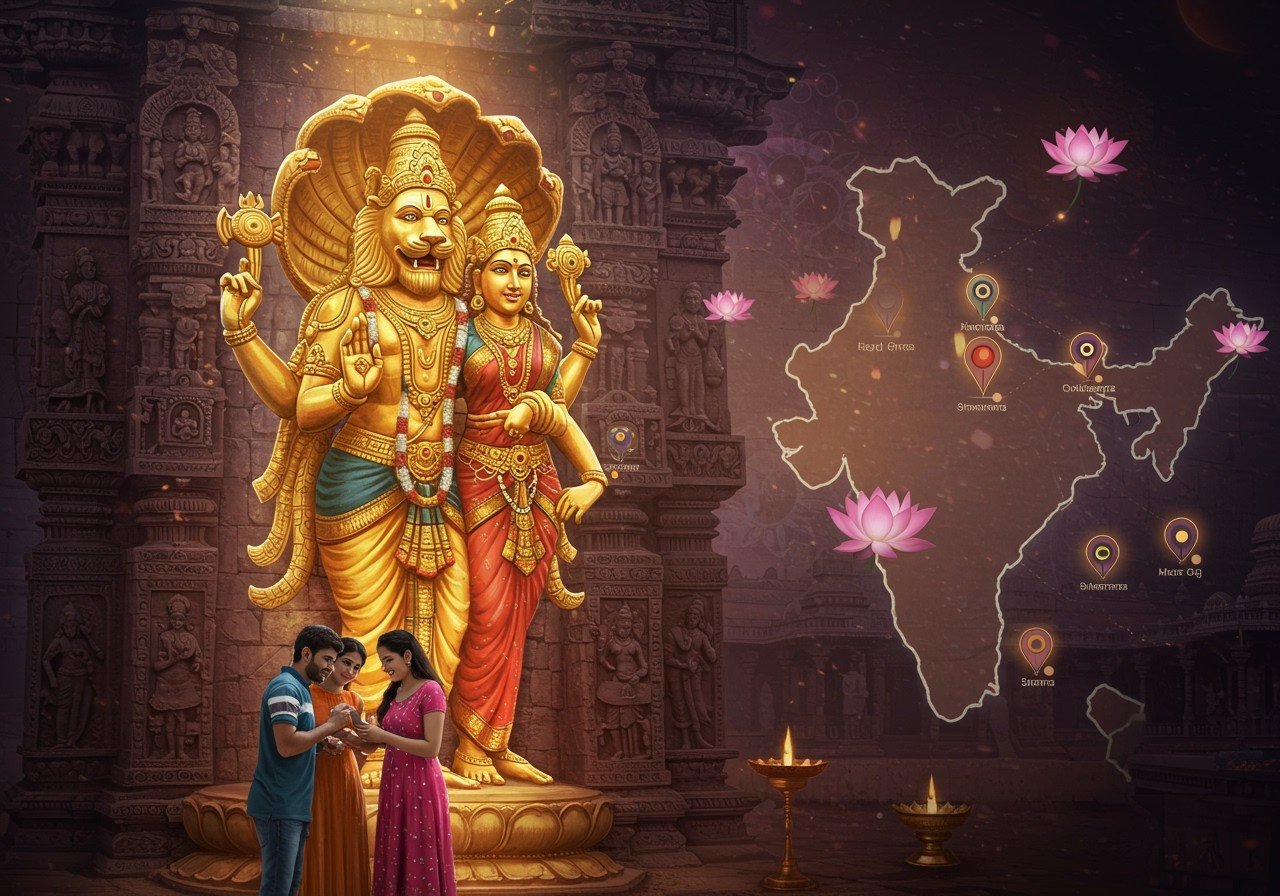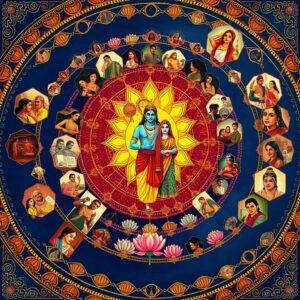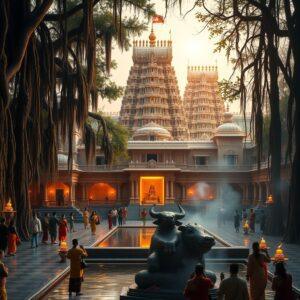
Delve into the rich cultural tapestry of India by exploring the revered Lakshmi Narasimha Swamy Temples. These temples, dedicated to Lord Narasimha, an incarnation of Vishnu, are scattered across the country, each with its unique history and architectural splendor. This guide helps devotees discover these sacred sites, offering a blend of spiritual enrichment and historical significance.
Significance of Lakshmi Narasimha Swamy
Lord Narasimha, the fourth avatar of Vishnu, appears as half-lion, half-man to protect his devotee Prahlada and vanquish the demon Hiranyakashipu. He embodies both fierce protection and compassionate divinity. His role in upholding dharma is central to his worship.
Prominent Lakshmi Narasimha Swamy Temples
Explore some of the most famous Lakshmi Narasimha Swamy Temples across India:
- Ahobilam Temple, Andhra Pradesh: Known for its nine Narasimha shrines, each with its own unique story and significance.
- Yadagirigutta Temple, Telangana: Renowned for its miraculous powers, attracting thousands of pilgrims seeking blessings and solutions.
- Simhachalam Temple, near Visakhapatnam: Celebrated for its intricate carvings and stunning architecture, enhancing the spiritual experience.
- Namakkal Anjaneyar Temple, Tamil Nadu: Unique for its combined worship of Narasimha and Hanuman, creating a distinct spiritual atmosphere.
Regional Variations and Unique Practices
Different states have unique rituals and festivals dedicated to Narasimha.
- Ahobilam: The annual Brahmotsavam festival is a grand celebration attracting numerous devotees.
- Narasimha Jayanti: Celebrated with grandeur in various temples, featuring special rituals and offerings. Unique prasad (offerings) and traditional music and dance performances enrich the cultural experience.
Architectural Marvels
The architectural styles of the Lakshmi Narasimha Swamy Temples vary, showcasing India’s rich heritage.
- Simhachalam Temple: Features Dravidian architecture with ornate gopurams (gateway towers).
- Ahobilam Temples: Reflects the Vijayanagara style, with intricate sculptures and mandapas (pillared halls).
- Belur Narasimha Temple, Karnataka: Showcases Chalukyan influences in its design.
Spiritual and Cultural Experience
Visiting these temples offers a profound spiritual and cultural immersion.
- Darshan: Viewing the deity provides a deeply moving experience for devotees.
- Pujas: Participating in various rituals enhances the spiritual atmosphere. The serene ambiance, often surrounded by nature, fosters peace and reflection. Traditional dance and music performances add to the cultural richness.
Planning Your Visit
Here are tips to plan your visit:
- Best Times to Visit: Consider weather and festival schedules. Check for specific dates for festivals like Narasimha Jayanti (May/June) for an immersive experience.
- Accommodations: Explore options ranging from budget-friendly stays to comfortable hotels near the temples. Booking in advance, especially during festival seasons, is highly recommended.
- Transportation: Research the nearest airports, railway stations, and local transport options. Consider hiring local taxis or auto-rickshaws for convenient travel between temples.
- Special Requirements: Be mindful of dress codes and any specific guidelines for temple entry. Some temples may require modest attire or restrict certain items.
How Poojn.in Enhances Your Spiritual Journey
Poojn.in, India’s leading online store for cultural and religious goods, provides everything you need for Lakshmi Narasimha Swamy worship. We offer a wide selection of high-quality products, including brass idols, copper items, puja accessories, and more, delivered right to your doorstep. Prepare for your temple visits or enhance your home shrine with our curated collection, ensuring a fulfilling and authentic worship experience.
Conclusion
Visiting the Lakshmi Narasimha Swamy Temples is a deeply enriching spiritual and cultural experience. Plan your journey, embrace the divine atmosphere, and create lasting memories. Explore Poojn.in’s blog for more insights into Hindu deities and rituals.


